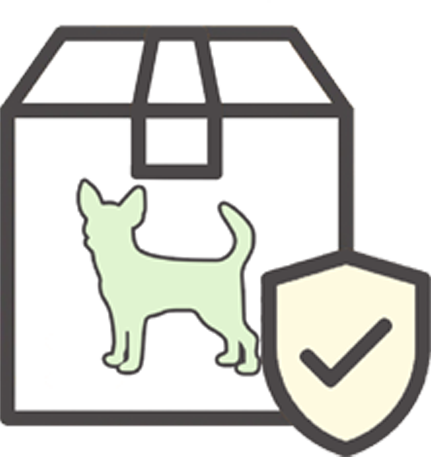5 Potty Training Mistakes You Didn’t Know You Were Making
Updated On: Friday, January 10, 2025 14:23:35 PM America/Los_Angeles
Command. Reward. Praise. It all sounds simple until you try to potty train your dog. Housebreaking is a big undertaking and even the most seasoned paw-rents can face challenges. In this post, we’ll discuss five potty training mistakes that you may have not thought of but are contributing to your potty training woes.
Photo by FP Creative Ltd
1. You don’t work with your dog’s preferences: Sure, you’d much rather your dog not pee on your beloved ficus tree. But what’s your pup’s preference telling you? Paying attention to your fur baby’s preferred potty spot provides clues about what feels intuitive to them. Work with those preferences instead of working against them. If your dog routinely pees on the indoor plants, they may have a strong preference for peeing on a natural indoor dog potty instead of a plastic. Try swapping out disposable or fake grass pee pads with a fresh grass pad like DoggieLawn to see if your dog will take to training more naturally.
2. You give up too early: Successful training means remaining consistent and being firm about where and when your dog should go potty. And it takes a lot longer than you think. If you give up after 1-3 days, not only will potty training be unsuccessful, they’ll likely become confused and have increased accidents. Trainers suggest trying for at least two weeks, but it can take up to eight weeks to master. Stay patient--the payoff will be worth it in the long run.
3. You haven’t changed your dog’s feeding schedule to accommodate training: Just like humans, if your dog drinks a gallon of water before bed time they’ll likely need to go potty before you’re ready to resume training in the morning. Not only does this break the pattern you’re trying to establish, you’ll likely resort to your pup’s usual routine if they bug you to be let out at 4 a.m. in the dead of winter. Dogs love drinking water, but they only need ⅛ (1 oz) of water per body weight. Ration water so that they get the water they need but when it makes the most sense for potty training. The same would go for dogs who free feed. Once your dog is trained on an indoor dog potty, you can return to free feeding and drinking.
4. You don’t take your dog’s age history into account: This doesn’t apply only to senior dogs. Even if your dog is middle-aged and healthy, it’s important to consider what they’ve learned over time. If your dog has been consistently scolded the last 5 months for peeing in a particular spot, it’s probably not the best idea to place a pee pad in that vicinity. They’ll associate that space to a negative reaction and resist going there. Conversely, if you’ve always praised your dog highly for waiting patiently at the door to go potty, putting the pee pad on the opposite side of the house is likely confusing.
5. You don’t make it easy for your dog: We get it--pee pads are not the most aesthetically pleasing addition to your home. But you’ve got to compromise to some degree. Did you place the pee pad in a dark garage that your dog would otherwise never enter? Or maybe you’ve placed a pee pad on the second floor and expect your short-legged Shih Tzu to go upstairs to take care of business. Making pee pads difficult to reach can be discouraging if not downright exhausting. Make sure you place a dog bathroom in a place that is accessible and easy to get to.


